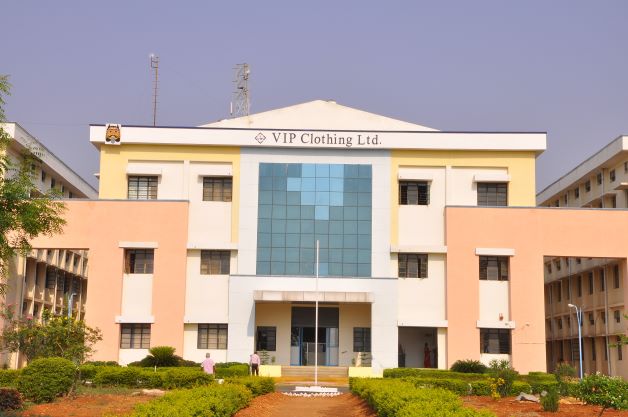
Digitalisation has gapped the bridge between brands and consumers
Digitalisation from a business standpoint seems to be highly beneficial as the B2C spectrum has a vigorous dependency on the digital line, says Kapil Pathare
India is a nation of culture and tradition where these aspects are highly driven into action prior to the invention or amendment of any object; hailing from the culture tree; the textile industry is one of the indispensable and primeval branches of the Indian business and communication that has played a quintessential role in uprising the economy of the nation. The textile industry has given an upper hand to the rise of exports by adding a value of 30 per cent. The industry is also crowned as the second largest employment generator in primeval and contemporary eras and the percentage experiences assertive increase each year.
The textile industry is one of the highly evolved business franchises; from being commodity wear to a style element is a transition that has changed the lifestyle of the people. Today people are highly concerned about the fabric that will be hugging their skin. Earlier apparel was considered a token of necessity, making it into the league of food, shelter, and clothes; now, with the wind of evolution, it has out-leagued the conventional and has entered into the breeze of contemporary fashion.
Significance of sustainability of the textile industry
The textile industry is ruling the economical market with an impeccable pace and manner; alas, fortunate pros come with unfortunate cons. Sustainability can somewhere act as a menace to the textile industry in the current epoch. The textile industry demands a colossal amount of natural resources alongside water and energy, and these factors come with a risk to the environment. Hence the textile industry is under the shed of sustainability.
Global warming is the leading concern of every industrial possessor and mainly the ones belonging to the textile industry. The process chain of manufacturing textiles has a tendency to bring dire harm to the environment. Beholding the concern of a non-harmful environment, the textile industry of the present period is producing sustainable textiles and initiating an effort to build a security shield for the environment. Sustainability is the top precedence of the textile maker as the consumer today demands and opts for eco-friendly fabric that causes no harm to the environment.
Measures of sustainability
The textile industry is functioning with a vision of manufacturing sustainable clothing and providing consumers with eco-friendly clothes. However, the consumers need to be educated and aware of the forestall.
Consumption of natural resources is a vital method driving the industry to the road of sustainability. Saving energy and water consumption flights the initiative of producing sustainable textiles and encapsulates the vision of providing consumers with eco-friendly clothing. The textile industry is one of the eminent economic contributors to the nation and delivering consumers’ demand for environmentally friendly clothes can pace up the industry with assertive growth.
The concept of automation and digitalisation
Living on the edge of the 21st Century, technology leaves no stone unturned to influence each sector to adopt relevant technology and eminent in their niche to provide what the present population needs.
There has been a gigantic transformation of the industry in the last three decades, where technology has played a quintessential role. Today every manufacturer is immune to the automated machines and technologies to be a brand that goes hand in hand with the current era. The process from production to packaging is seamlessly executed with automated pieces of machinery; however, the amalgamation of traditional practices and automation creates a worthwhile product that undoubtedly fits in the desired list of consumers.
Digitalisation is a podium that has gapped the bridge between brands and consumers. Today fashion has draped itself into digitalization, and it is facile to meet the desires of consumers regarding their fashion preferences. With digitalisation, time saving and pre-eminent quality are experienced. The voyage of digitalisation of the textile industry will lead to collecting perks that mark cost efficiency, a firm grip on B2B and B2C supply, and widening the business. The digital dome also has time efficiency in it that assists in eradicating the production scarcity con.
Digitalisation from a business standpoint seems to be highly beneficial as the B2C spectrum has a vigorous dependency on the digital line. Providing the consumers with an extensive range of products viz-a- viz digital platforms bring better business proximity.
Future plans and expansion of the company
Remarking oneself as a Businessman moreover an Industrialist, one of the utmost aspects is to never settle and always sketch plans for an excellent expansion of the company. Serving the intimate wear industry, which today is in the arms of the fashion segment, certainly, there shall be showers of further categories catering for each target audience. Our latest launch Frenchie U-19 serves inner-wear to teens with desired fits and contemporary styles.
Summer is on its way to lay people’s hands into their wardrobes in search of summer-soothing wear. Thus there will be a colossal enlargement in athleisure wear to provide consumers with the athleisure wear that was pining in their closets.
Availability is a paramount element in reaching your consumers since we are initiating the expansion of EBO’s to make our availability at the consumer’s fingertip. For the widening of the accessories league, we have planned to serve ranges of socks into the market.
Being digital is a quest of opportunities, and we have made our presence there fare thee well by providing an extensive range of products on E-commerce platforms and a revamped website with an alluring UI and user-friendly experience.
About the author:





